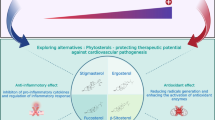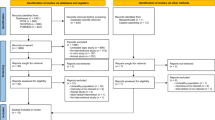Abstract
Objective
Phytoestrogen isoflavones (IFs) are considered to suppress estrogen-related cancers through their antiestrogenic activity. The antioxidant effect of IFs, however, has not been confirmed in anin vivo system, so suppression of hydroperoxide formation and resultant DNA adduct formation were studied.
Methods
The antioxidant effects of the soya-hypocotyl tea (SHT), which contained daidzein (14+/−1.5 mg/l) and genistein (3+/−0.5 mg/l), were examined in Wistar rats fed the AIN-76 control diet or iron deficient diet (FeD) for 4 weeks. The intake amount of the diet and IFs were measured daily. Urinary excretion of IFs was measured for 3 days before sacrifice. In addition to the serum lipid analyses, phosphatidylcholine hydroperoxide (PCOOH), and phosphatidylethanolamine hydroperoxide (PEOOH) production in red blood cells and the liver were measured as a biomarker of oxidants. Production of DNA adducts by oxidative stress was measured by the amount of 8-hydroxy-2′-deoxyguanosine (oh8dG) in the liver and kidney, and urine. Histological changes were checked by H&E staining and immunohistochemistry for oh8dG.
Results
FeD rats showed anemia, growth retardation, hyperlipidemia. IFs only lowered the triacylglycerol level and did not change the cholesterol level. Rats fed the normal diet did not show suppression of PCOOH and PEOOH production in either red blood cells or the liver, while groups administered SHT showed suppressed production of PCOOH and PEOOH in the liver. The cumulative intake of daidzein, genistein and the total amount of IFs showed significant inverse associations with urinary excretion of oh8dG. oh8dG in the kidney showed an inverse association with the amount of oh8dG in the urine. Enzymehistochemically, a strong localization of oh8dG was found in the epithelial cells of the bile canaliculi and proximal tubules of the kidney.
Conclusion
IFs and SHT showed antioxidant effects at physiological concentrations in anin vivo system. The antioxidant effects of IFs decreased oxidation stress to the nuclear DNA, which was shown by the decreased oh8dG production. It is suggested that to prevent various cancers, in addition to the known antiestrogenie, antityrosin kinase, and other effects. IFs appeared to promote excretion of oh8dG.
Similar content being viewed by others
References
Adlercreutz CH, Goldin BR, Gorbach SL, Hockerstdt KA, Watanabe S, Hamalainen EK, Markkanen MH, Makela, Wahala KT. Soybean phytoestrogen intake and cancer risk. J. Nutr. 1995; 125: 757–770.
Haba R, Uesugi S, Watanabe S. Isoflavones, In; J.-R. Neeser, B. German (eds) Chemical analysis and health benefits of isoflavones. Biotechnology for Performance of Foods, Functional Foods and Nutraceuticals.; Marcel Dekker, New York (in press).
Watanabe S, Adlercreutz H. Pharmacokinetics of soy phytoestrogens in humans. ACS Symposium Series 1998; 702: 198–208.
Watanabe S, Koessel S. Colon cancer, an approach from molecular epidemiology. J. Epidemiol. 1993; 3: 47–61.
Arai Y, Uehara M, Sato Y, Kimira M, Eboshida A, Adlercreutz H, Watanabe S. Comparison of isoflavones among dietary intake, plasma concentration and urinary excretion for accurate estimation of phytoestrogen intake. J. Epidemiol. 1998; 10: 127–135.
Adlercreutz H, Markkanen H, Watanabe S. Plasma concentrations of phyto-oestrogens in Japanese men. Lancet 1993; 13: 1209–1210.
Murkies AL, Dalais FS, Briganti EM, Healy DL, Urger HG, Wahlqvist ML, Davis SR. Phytoestrogen and androgen levels in Australian. 3rd Intnl Symposium on the Role of Soy in Preventing and Treating Chronic Diseases. Washington DC, 1999, p 38.
Tsukamoto C, Shimada S, Igata K, Kudou S, Kokubun M, Okubo K, Kitamura K. Factors affecting isoflavones, saponins, and composition of fatty acids at different temperatures during seed development. J. Agric. Food Chem. 1995; 43: 1184–1192.
Uehara M, Chiba H, Mogi H, Suzuki K, Goto S. Induction of increased phosphatidylcholine hydroperoxide by an iron-deficient diet in rats. J. Nutr. Biochem. 1997; 8: 622–629.
Arai Y, Watanabe S, Kimira M, Shimoi K, Mjochizuki R, Kinae N. Deitary intakes of flavonols, flavones and isoflavones by Japanese women and the inverse correlation between quercetin intake and plasma LDL cholesterol concentration. J. Nutr. 2000; 130: 2243–2250.
Marco GJ. A Rapid Method for Evaluation of Antioxidants. JAOCS 1968; 45: 594–598.
Miller HE. A Simplified Method for the Evaluation of Antioxidants. JAOCS 1970; 48: 91.
Miyazawa T. Determination of phospholipid hydroperoxides in human blood plasma by a chemiluminescence-HPLC assay. Free Radic. Biol. Med. 1989; 7: 209–217.
Miyazawa T, Suzuki T, Fujimoto K, Kaneda T. Phospholipid hydroperoxide accumulation in liver of rats intoxicated with carbon tetrachloride and its inhibition by dietary α-tocopherol. J. Biochem. 1990; 107: 689–693.
Chiba H, Takasaki M, Masuyama R, Uehara M, Kanke U, Suzuki K, Goto S. Time course of change in hepatic lipid peroxide level in iron-deficient rat. Jpn. Soc. Nutr. Food Sci. 1998; 51: 201–206.
Nakae D, Miumoto Y, Kobayashi E, Noguchi O, Konishi Y. Improved genomic/nuclear DNA extraction for 8-hydroxydeoxyguanosine analysis of small amounts of rat liver tissue. Cancer. Lett. 1995; 97: 233–239.
Kasai H, Nishimura S. Hydroxylation of guanine in nucleosides and DNA at the C-8 Position by heated glucose and oxygen radical-forming agents. Environ. Health Perspect. 1986; 67: 111–116.
Kasai H, Hayami H, Yamaizumi Z, Saito H, Nishimura S. Detection and identification of mutagens and carcinogens as their adducts with guanosine dervatives. Nucleic Acids Res. 1984; 12: 2127–2136.
Toyokuni S, Tanaka T, Hattori Y, Nishiyama Y, Yoshida A, Uchida K, Hiai H, Ochi H, Osawa T. Quantitative immunohistochemical determination of 8-hydroxy-2′-deoxyguanosine by a monoclonal antibody N45.1: its application to ferric nitrilotriacetate induced renal carcinogenesis model. Lab. Invest. 1997; 76: 365.
Watanabe S, Yamaguchi M, Sobue T, Takahashi T, Miura T, Arai Y, Mazur W, Wahala K, Adlercreutz H. Pharmacokinetics of soybean isoflavones in plasma, urine and feces of men after ingestion of 60 g baked soybean powder (kinako). J. Nutr. 1998; 128: 1710–1715.
Floyd RA, Watson JJ, Qong PK, Altmiller DH, Rickard RC. Hydroxyl free radical adduct of deoxyguanosine: sensitive detection and mechanisms of formation. Free Radie. Res. Commun. 1986; 1: 163–172.
Watanabe S, Haba R, Terashima K, Arai Y, Miura T, Chiba D, Takamatsu M. Antioxidant activity of soya hypocotyl tea in humans. Biofactors. 2000; 12: 227–232.
Watanabe S, Terashima K, Sato Y, Arai S, Eboshida A. Effects of isoflavone supplement on healthy women. Biofactors. 2000; 12: 233–241.
Author information
Authors and Affiliations
Corresponding author
Rights and permissions
About this article
Cite this article
Haba, R., Watanabe, S., Arai, Y. et al. Suppression of lipid-hydroperoxide and DNA-adduct formation by isoflavone-containing soy hypocotyl tea in rats. Environ Health Prev Med 7, 64–73 (2002). https://doi.org/10.1007/BF02897332
Received:
Accepted:
Issue Date:
DOI: https://doi.org/10.1007/BF02897332




